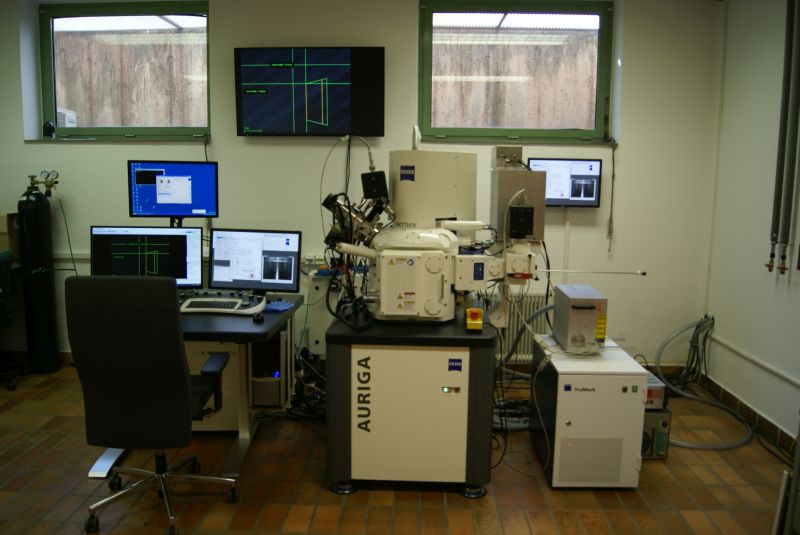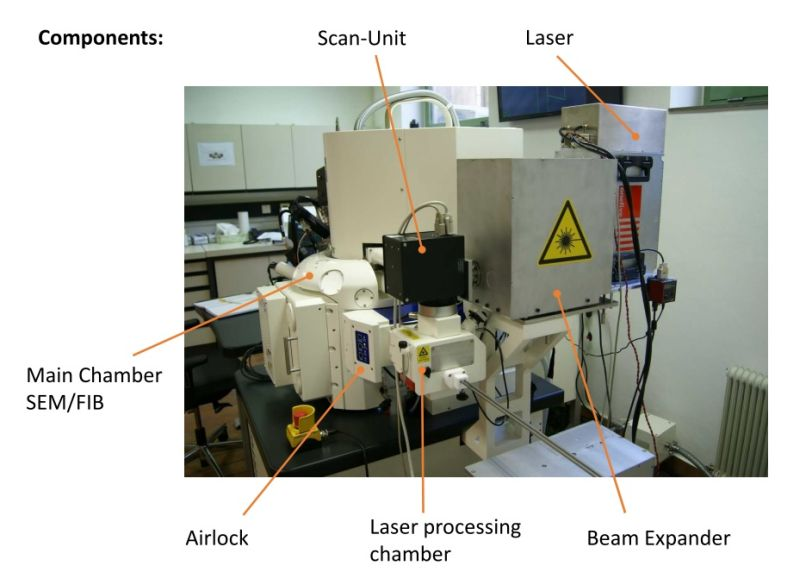The Zeiss Auriga LaserFIB system combines the advantages of the CrossBeam technology, consisting of a focused ion beam column (Orsay Physics Ga+ ion FIB) and a scanning electron column (Gemini Schottky field emission) - with the capability of fast material removal by a femtosecond pulse laser. The integrated OneFive Origami 10XP femtosecond laser produces pulses with a duration of about 500 fs and a maximum average power of 4 W. Further it offers the possibility to operate at wavelengths of 1030 or 515 nm.
By employing a laser for material ablation, the removal rates are orders of magnitude higher compared to the rates achievable with the FIB technique. While continuous and short pulse laser lead to an extended heat affected zone, ultrashort pulse laser (< 10 picoseconds pulse duration) exert ideally no thermal influence on the surrounding material. Therefore, a femtosecond laser offers an ideal tool for a rapid sample preparation on the mesoscale and for a precise pre-preparation for successive FIB processing.
The electron beam of the SEM can be used to simultaneously observe and control the milling process of the FIB. For imaging and analysis an Everhart Thornley Detector (SE-Detector), an Inlens-Detector and a four quadrant backscatter detector are available. Furthermore, the workstation is equipped with an Inlens Energy selective Backscatter (EsB) Detector, which provides nano-scale compositional information in combination with high spatial resolution. At the Erich Schmid Institute the Auriga LaserFIB system is mainly used to fabricate micro-mechanical test specimens and to study the influence of the preparation parameters on the structural and mechanical properties of materials.
More details on the setup and the performance of the system can be found in the following publication:
This work features a case study on the preparation of micro-mechanical cantilevers in tungsten foils and demonstrates the capabilities of the FIB/fs-laser combination.
Further studies showed the applicability of the femtosecond laser processing for the preparation of mechanical specimens on the mesoscale, as well as for various other materials, such as wood, bone, polymers or ceramics.
The pioneering work regarding the combination of a femtosecond laser and a FIB at the Erich Schmid Institute paved the way for the development of the ZEISS Crossbeam LaserFIB, released early 2020.


